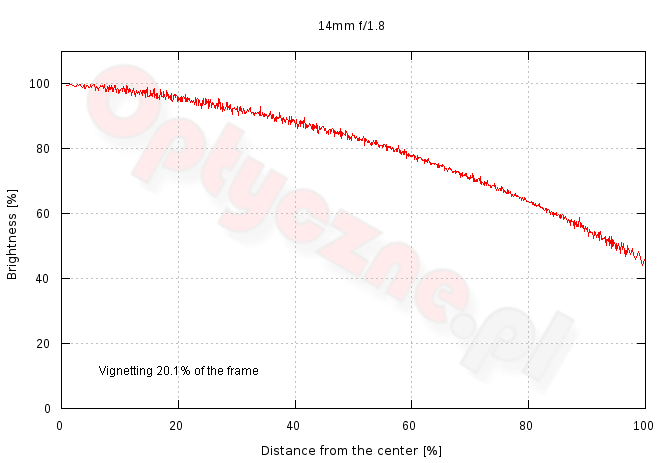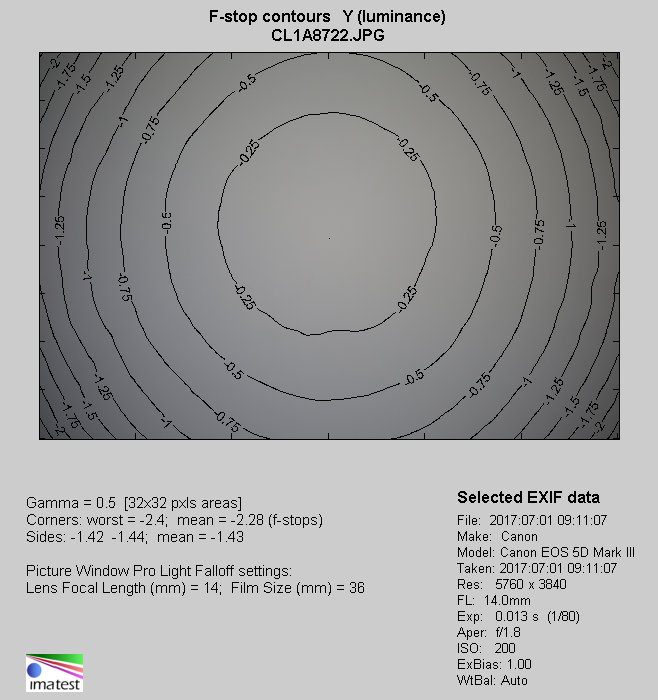Sigma A 14 mm f/1.8 DG HSM
8. Vignetting
| Canon 50D, f/1.8 | Canon 50D, f/2.0 |

|

|
Even at the maximum relative aperture the vignetting can hardly be called bothersome as it reaches 22% (−0.73 EV). The problem disappears practically completely on stopping down the aperture to f/2.0 as its level decreases to 16% (−0.52 EV); then it becomes completely invisible by f/2.8, amounting to 7% (−0.21 EV).
Please Support UsIf you enjoy our reviews and articles, and you want us to continue our work please, support our website by donating through PayPal. The funds are going to be used for paying our editorial team, renting servers, and equipping our testing studio; only that way we will be able to continue providing you interesting content for free. |
- - - - - - - - - - - - - - - - - - - - - - - - - - - - - - - - - - - - - - - - - - - - - - - -
Now let’s check the situation on full frame.
| Canon 5D III, f/1.8 | Canon 5D III, f/2.0 |

|

|
| Canon 5D III, f/2.8 | Canon 5D III, f/4.0 |

|

|
At the maximum relative aperture the brightness loss in the frame corners gets to 55% (−2.28 EV). You can say that value is high at first glance but if you compare it to the performance of rivals you just want to clap and cheer. The Sigma’s loss of light is more or less the same even though its maximum relative aperture is by 1-1.3 EV better than the aperture of its rivals. It’s worth reminding here that the Irix had a huge vignetting level of 72%, that of the Canon 2.8/14 II was only a bit lower (65%) and the result of the Samyang 2.8/14 was 55%.
Mind you the Sigma can be stopped down and its vignetting diminished even further - by f/2.0 it is already 46% (−1.76 EV), and by f/2.8 it gets to just 25% (−0.84 EV) so several dozen percent less than in the case of its rivals.
The vignetting stops being a problem by f/4.0, f/5.6 and f/8.0 amounting to, respectively, 16% (−0.50 EV), 13% (−0.40 EV) and 12% (−0.37 EV).
Below we present averaged out values of brightness loss shown in concentric circles as you move further away from the frame centre. The numerical value for every image, expressed in percents, shows the area limited from the top and right by 100% and from the bottom by the presented curve. The area indicates how much light overall is lost due to the vignetting effect. Please don’t mix these percentages with the values given at the beginning of the chapter because they aren’t directly connected.

| Canon 5D Mk III, JPEG, f/1.8 |
 |






